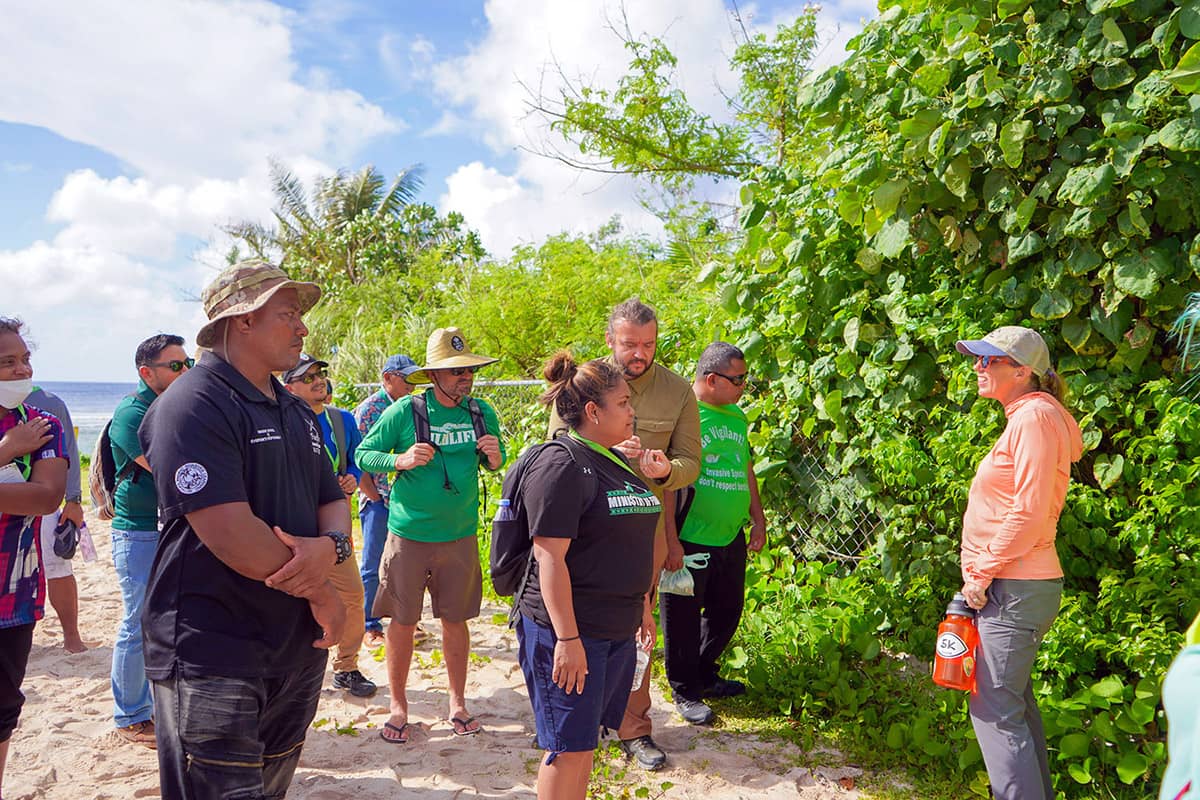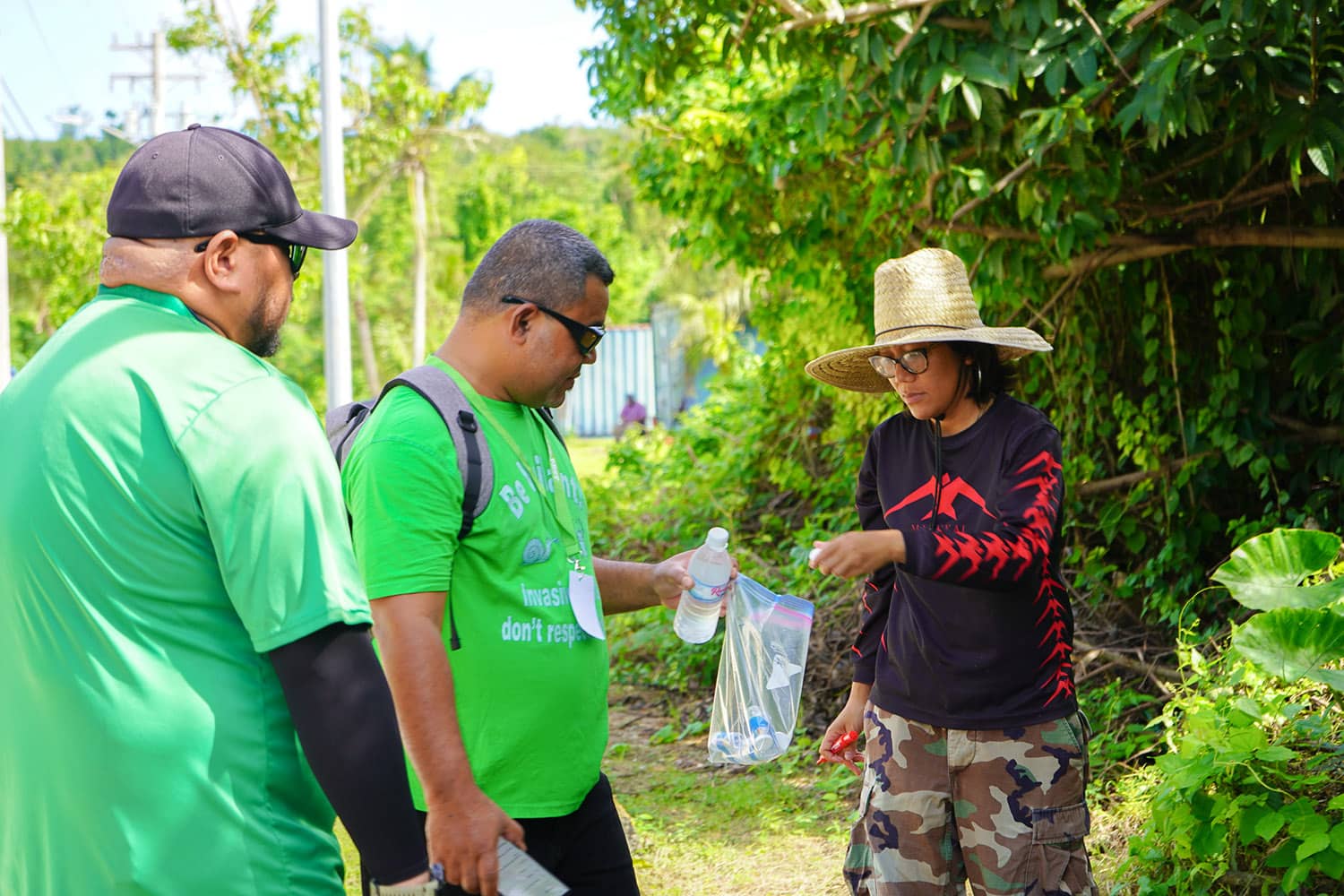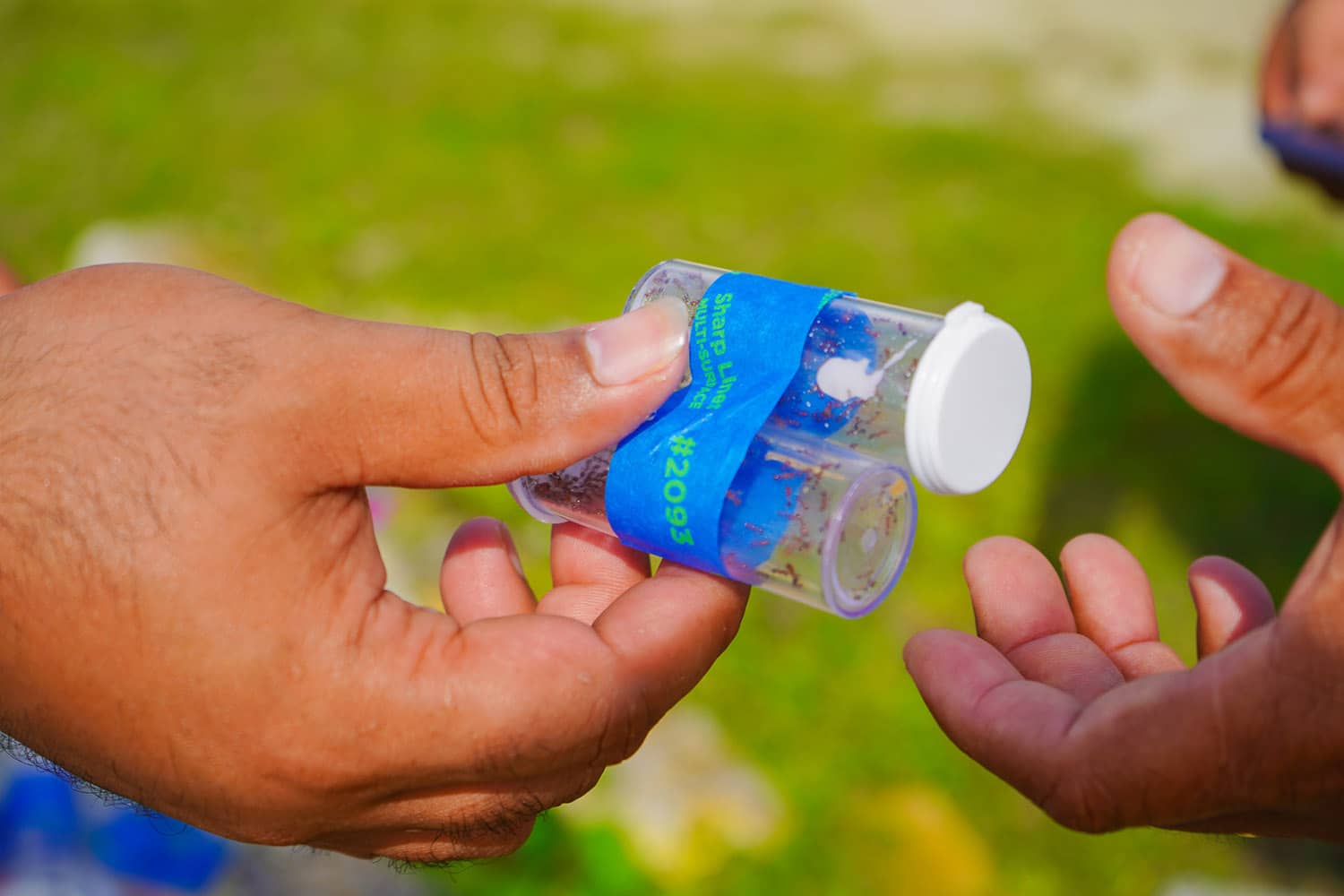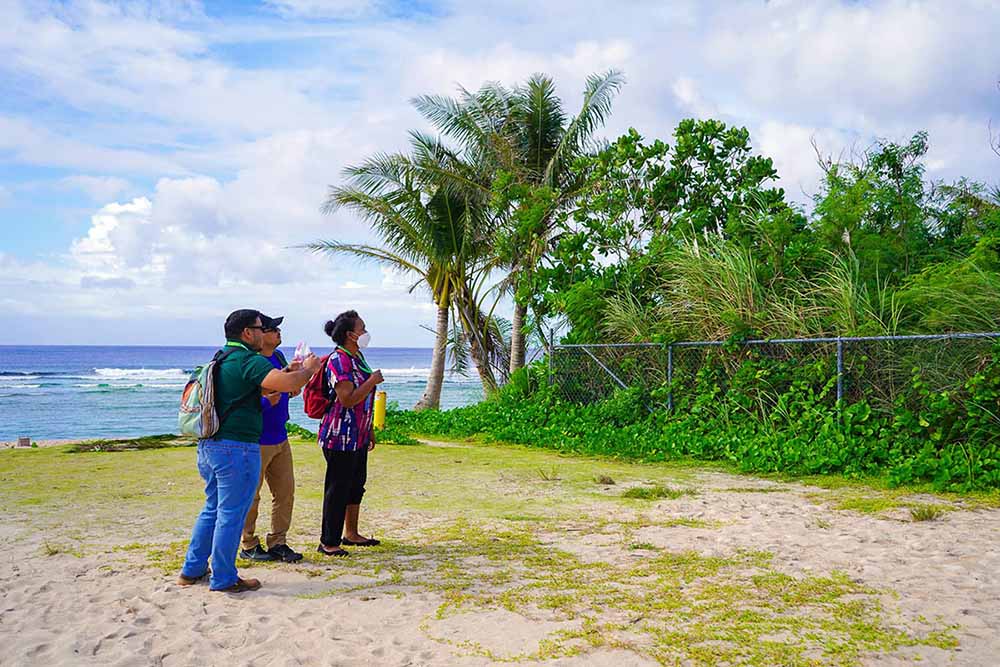UOG invasive species specialists contribute to multi-island biosecurity training
UOG invasive species specialists contribute to multi-island biosecurity training
UOG invasive species specialists contribute to multi-island biosecurity training
12/13/2023
Seven U.S. insular islands and Kiribati convened in Guam last month to learn and share tools, techniques, and best practices for the prevention and management of invasive species. Held from Nov. 27 to Dec. 2 at the Hyatt Regency Guam, the “Regional Biosecurity Training for the U.S. Territories, Freely Associated States, and Kiribati” is the first regional gathering on biosecurity since before the pandemic.
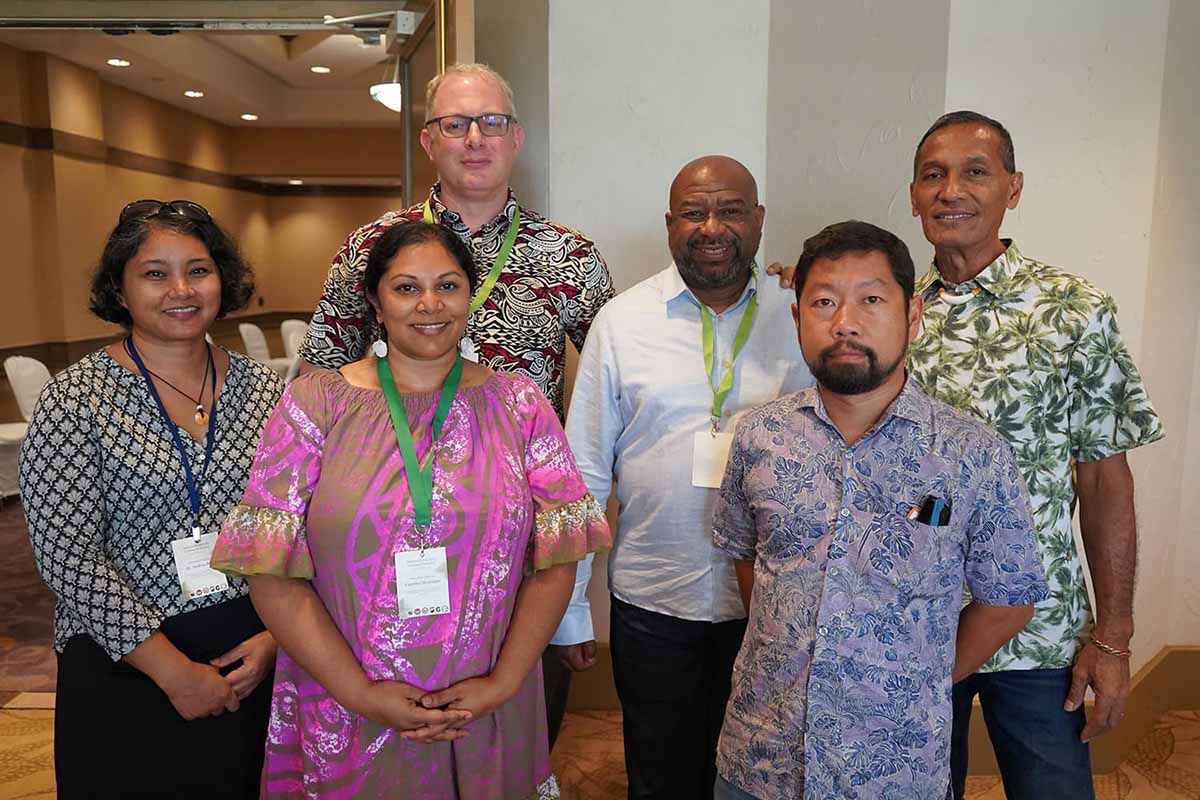 Invasive species specialists and researchers from the University of Guam’s Cooperative Extension & Outreach and Western Pacific Tropical Research Center, along with the Guam Department of Agriculture's Biosecurity Division, helped coordinate
and facilitate the event as well as offer expertise and training.
Invasive species specialists and researchers from the University of Guam’s Cooperative Extension & Outreach and Western Pacific Tropical Research Center, along with the Guam Department of Agriculture's Biosecurity Division, helped coordinate
and facilitate the event as well as offer expertise and training.
The training was organized and sponsored by the U.S. Department of the Interior Office of Insular Affairs and the U.S. Department of Agriculture, both of which had director-level personnel and teams on island for the event.
With increasing global commerce and inter-island trade, the issue of invasive species requires regional coordination and response. Guam was chosen as the meeting point due to its number of biosecurity and invasive species research and management activities that other islands could model or build upon.
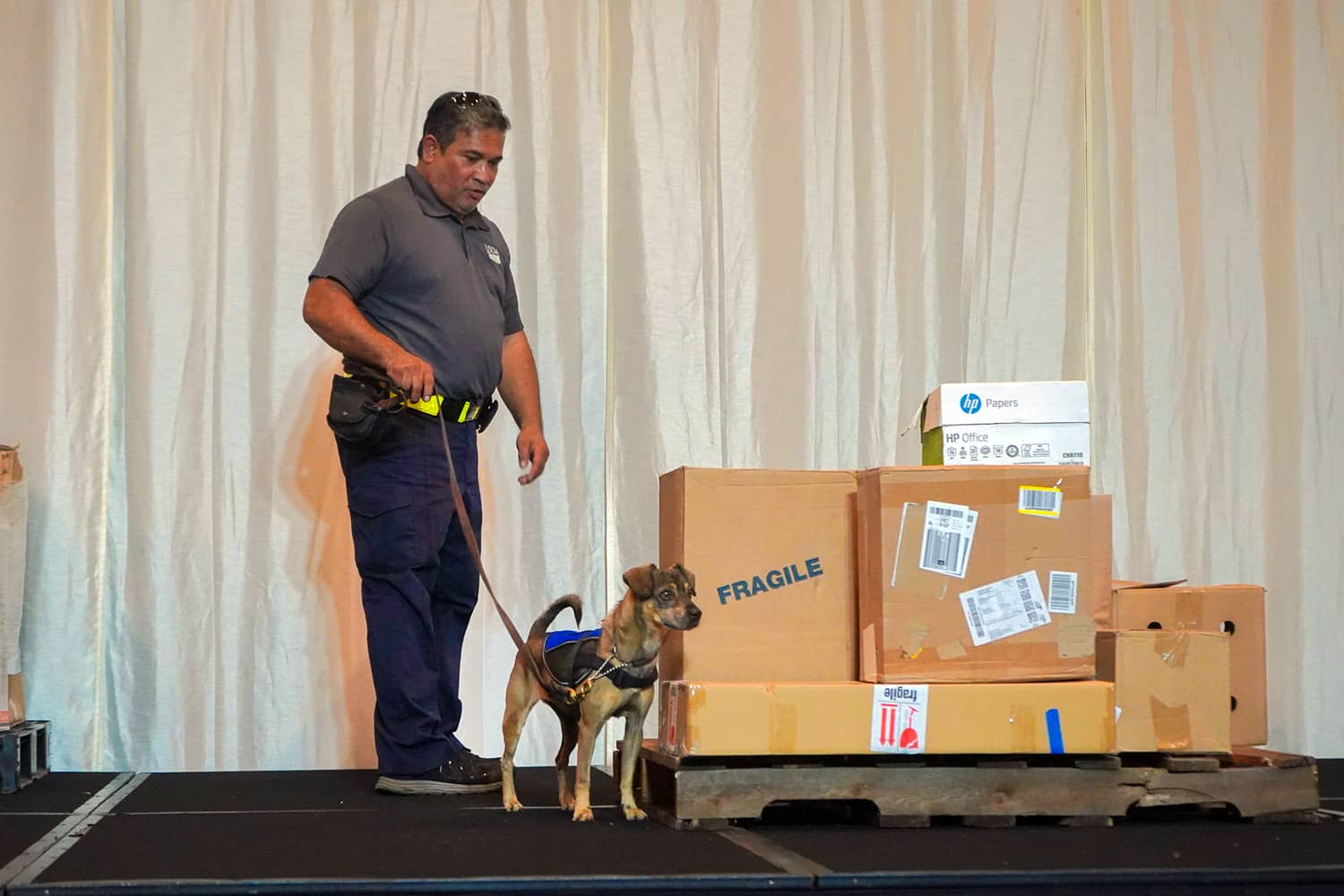 Nearly 100 government administrators and frontline biosecurity personnel were in attendance
from Guam, American Samoa, the Northern Mariana Islands, the Federated States of Micronesia,
the U.S. Virgin Islands, Palau, the Marshall Islands, and Kiribati.
Nearly 100 government administrators and frontline biosecurity personnel were in attendance
from Guam, American Samoa, the Northern Mariana Islands, the Federated States of Micronesia,
the U.S. Virgin Islands, Palau, the Marshall Islands, and Kiribati.
“Although every island is unique, we share similar, if not identical, biosecurity and invasive species issues. Additionally, everyone approaches them differently depending on the availability of resources,” said Glenn Dulla, UOG plant pathologist under the Western Pacific Tropical Research Center.
On-site trainings and demonstrations
Dulla co-organized a training track on post-border biosecurity management. Unlike previous regional plant protection and quarantine trainings offered by USDA in collaboration with UOG and DoAg, this training expanded beyond pre-border and border level to include a Biosecurity Administrator & Policy Track and a Post-Border Biosecurity Track.
Key discussions at the week-long training included building local capacity and developing a biosecurity network. Key topics included the coconut rhinoceros beetle, little fire ant, invasive vines, and the brown tree snake as well as the marine biosecurity issues of stony coral tissue loss disease, ballast water management, and vessel discharge.
Rachel Jolley, a restoration ecologist with UOG WPTRC, led an on-site training on identifying and controlling mile-a-minute (Mikania micrantha) and chain-of-love (Antigonon leptopus) vines, which, like other vines, can quickly overgrow forests and kill underlying trees. She demonstrated the best control method, which is to cut the vine near its base, allow a few weeks of regrowth, then cut it again or apply herbicide.
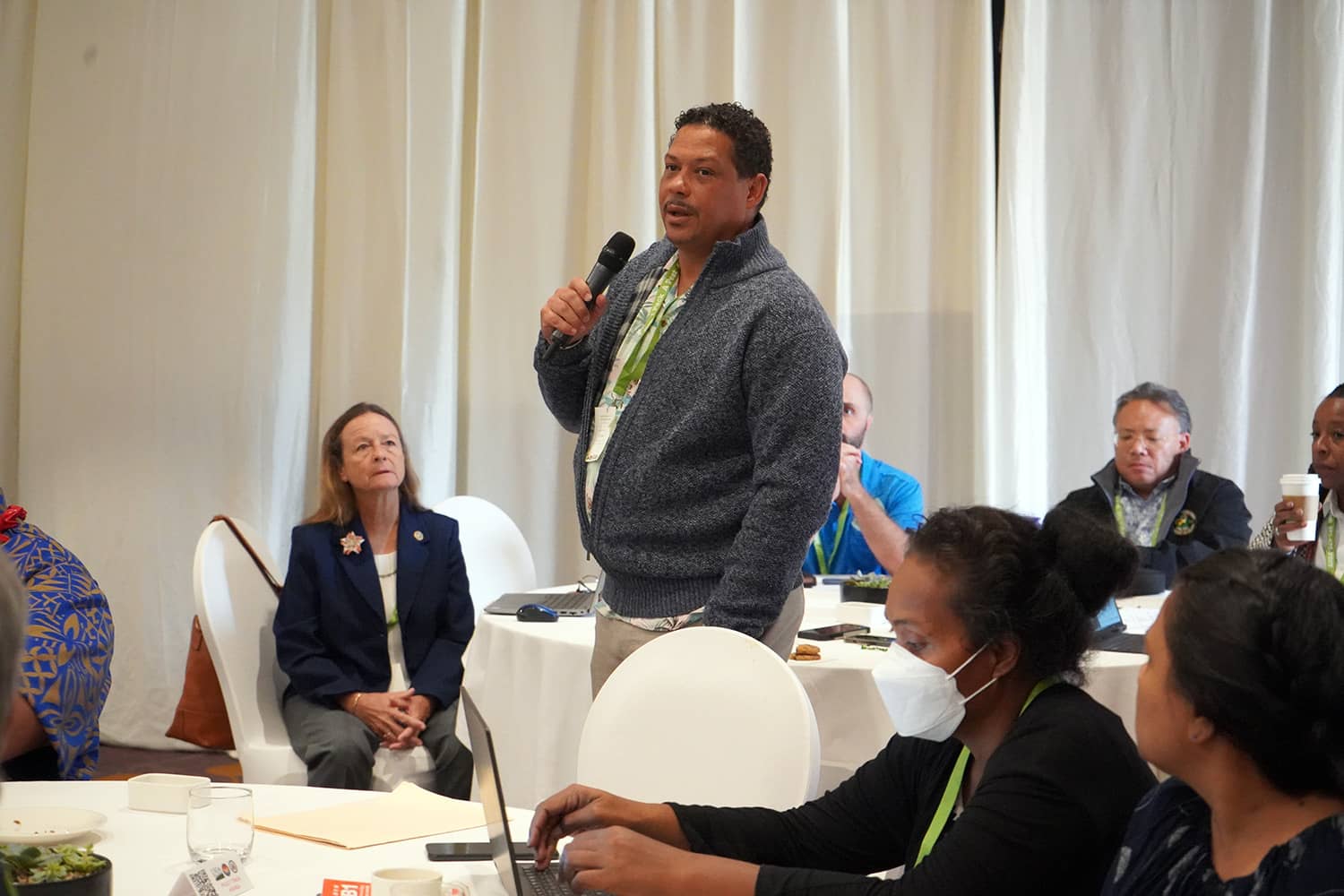
"Although different islands have struggle with different species, it is important to be aware of problem species in other islands so that they can be detected early on when they reach a new island," she said.
In addition to invasive vines, participants were able to see firsthand the devastation of the rhino beetle, learn how to detect the presence of little fire ants, and observe how detector dogs are used to find rhino beetles and snakes.
“We have never heard about the little fire ant,” said Jean-Pierre L. Oriol, commissioner for the U.S. Virgin Islands Department of Planning and Natural Resources. “But now we’ve learned that they’ve made it to Mexico, so they could soon be making their way to other islands because Mexico trades a lot with Caribbean islands.”
Simultaneously, the Virgin Islands delegation was able to share their knowledge on stony coral tissue loss, a fast-spreading coral disease affecting the Caribbean and Atlantic that has not yet been found in the Pacific.
Building better biosecurity in the Pacific
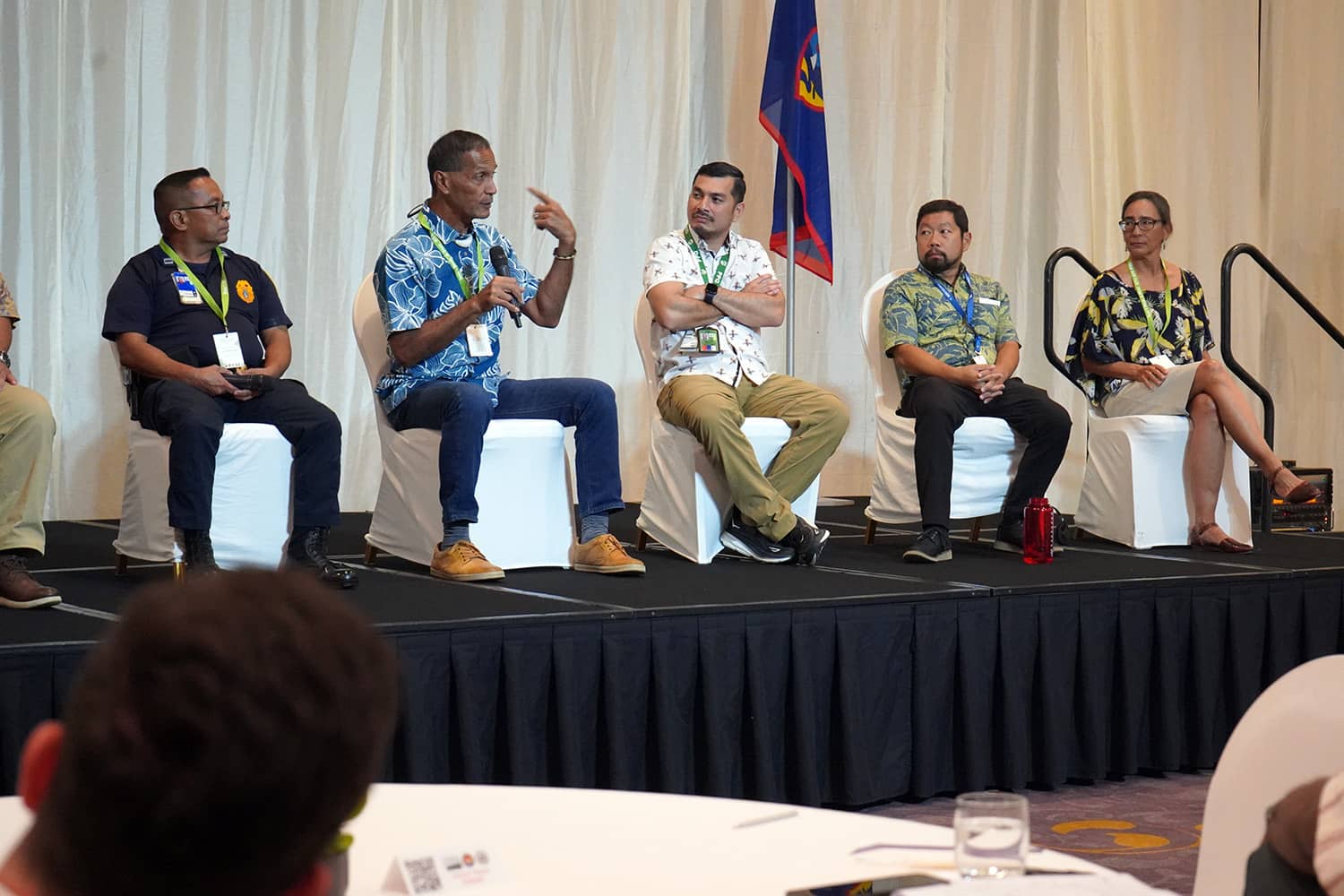
“I thought this training was incredible,” said Mary Beust, supervisory plant protection quarantine officer with USDA Animal & Plant Health Inspection Service in Hawaii. “… I feel like now I have colleagues, friends across the Pacific … all trying to do the same thing and work together to build better biosecurity in the Pacific. I think we’re heading in the right direction.”
The University of Guam, as a Land-Grant university serving the Micronesian region, administers several projects related to biosecurity, which can impact not only an island's natural resources, but its economy and way of life. Some of these projects include the invasive species detector dog pilot program, biological control research, port of entry interdiction programs, native species research, and pest, disease, and weed management research.
The regional training follows the Pacific Ecological Security Conference held in Palau in 2022, which outlined a need for coordination among Pacific Island countries and territories toward building capacity, expertise, and technical assistance to address invasive species.
If you have questions about invasive species in Guam and control methods, please contact UOG Cooperative Extension & Outreach at (671) 735-2080.

